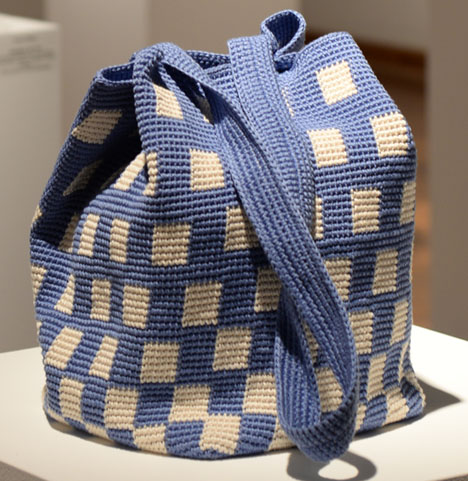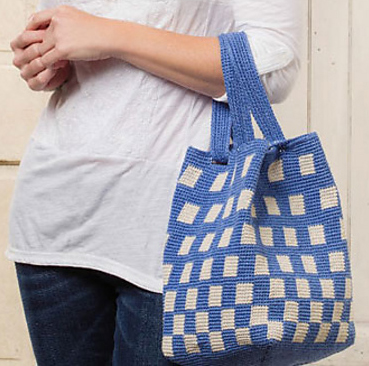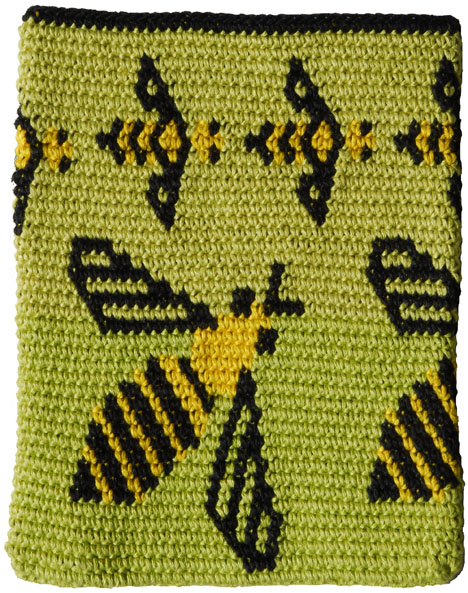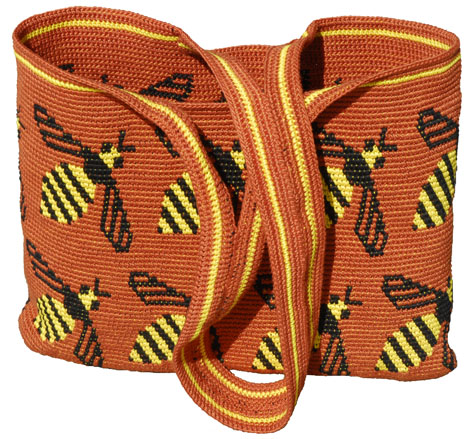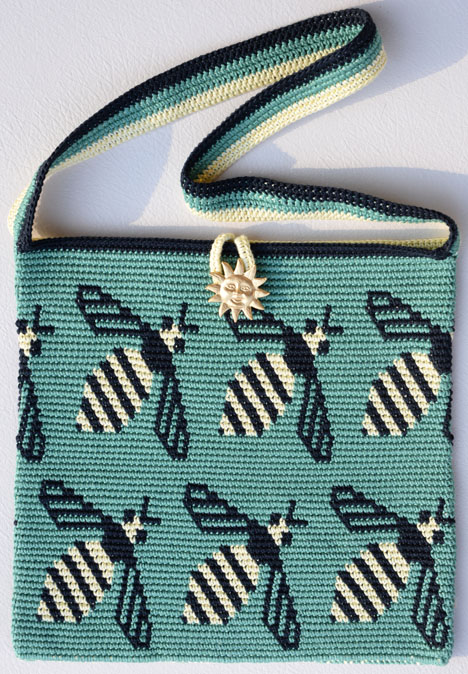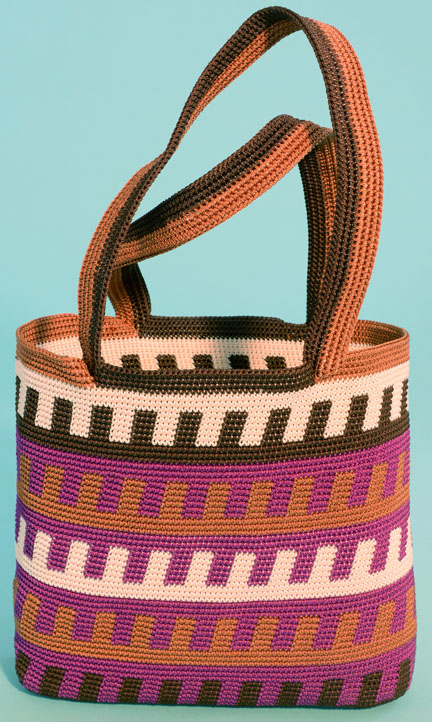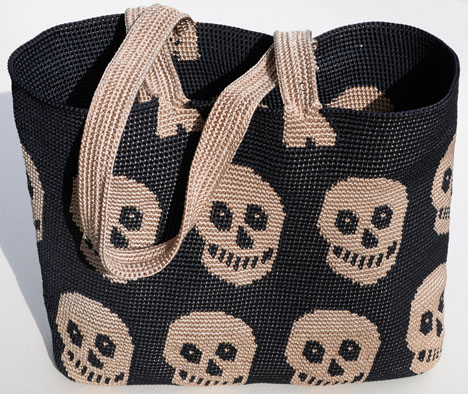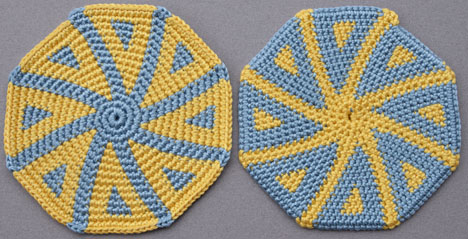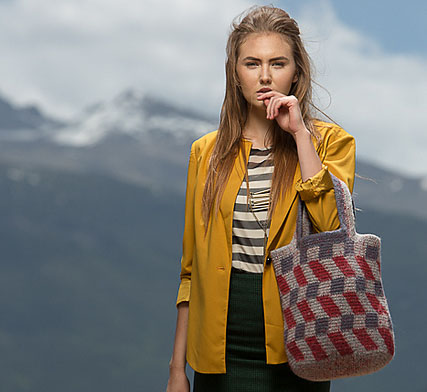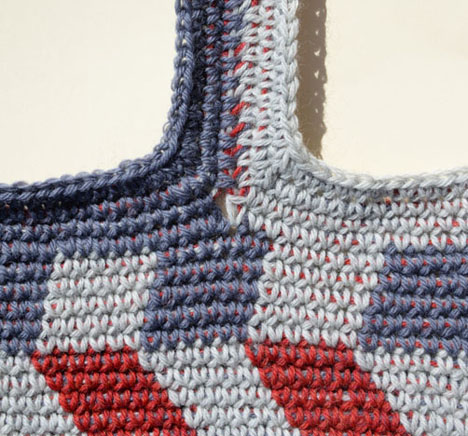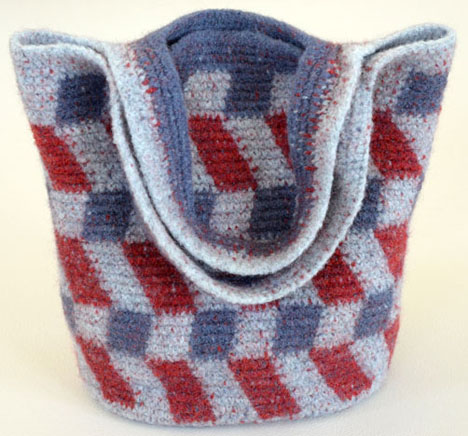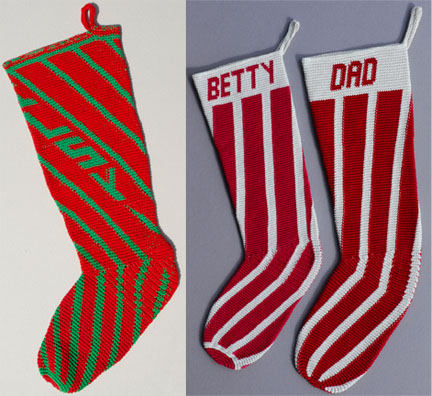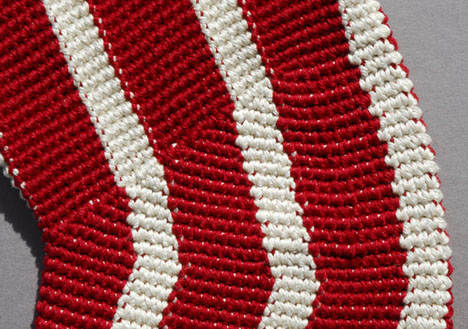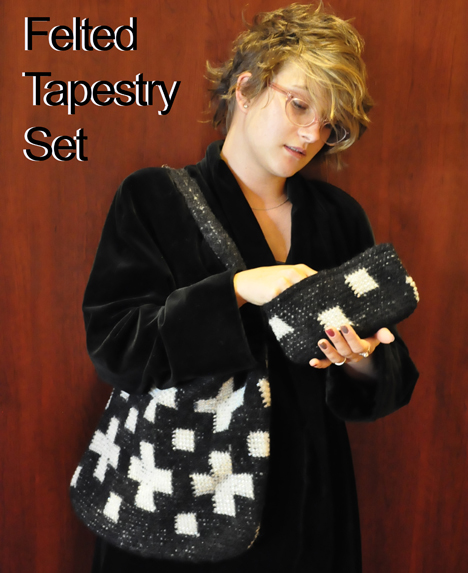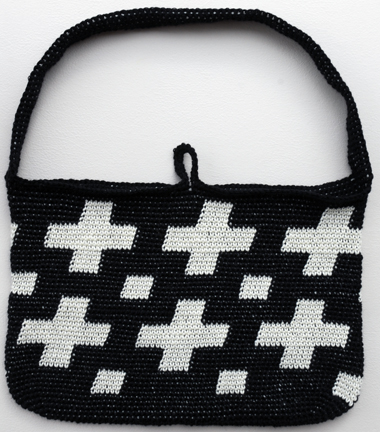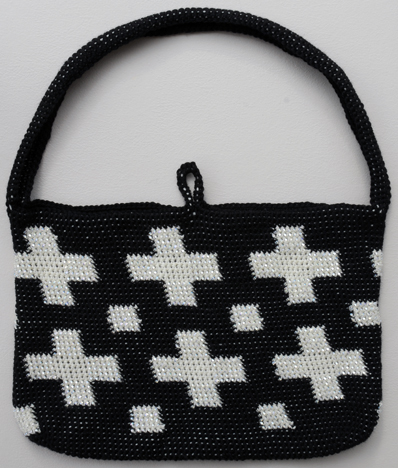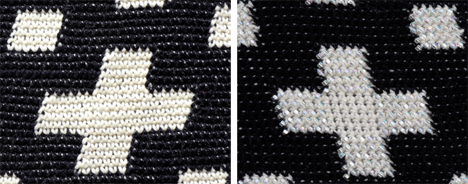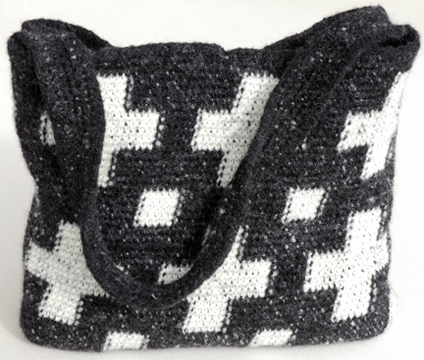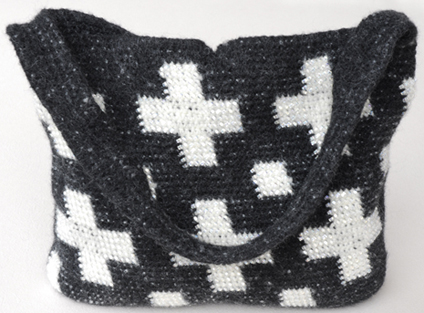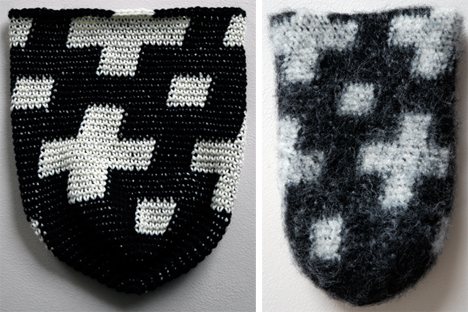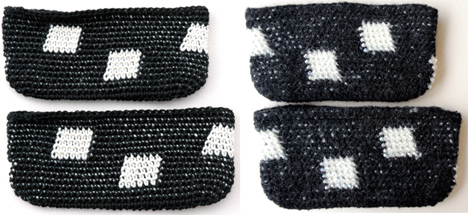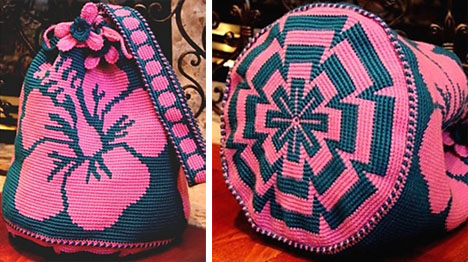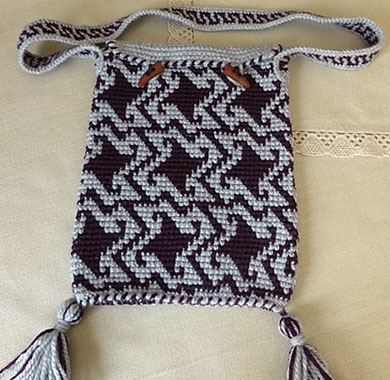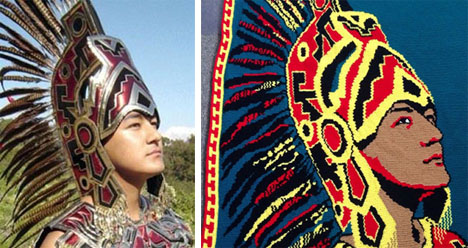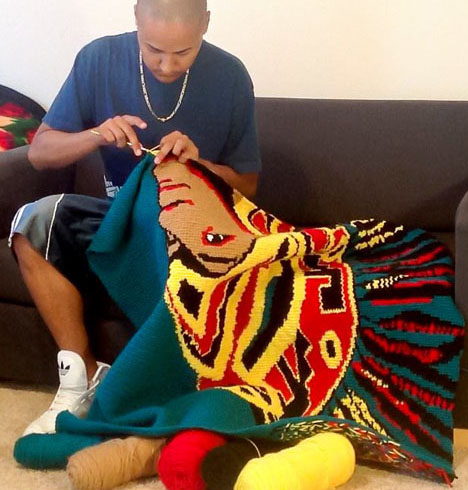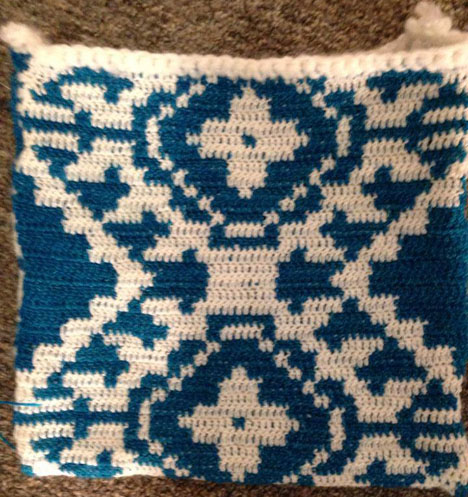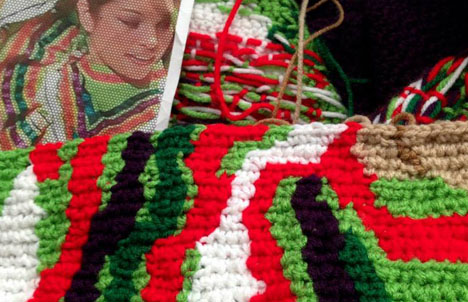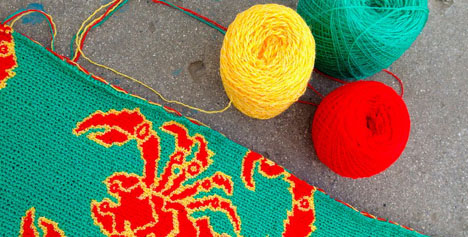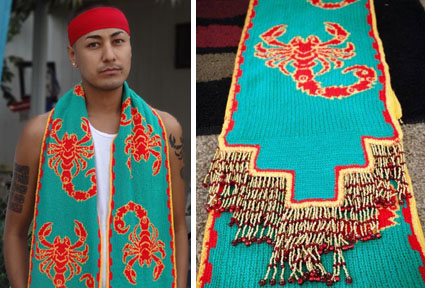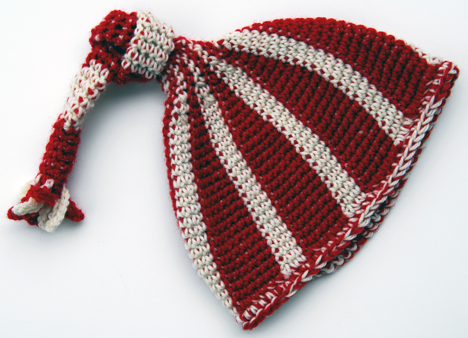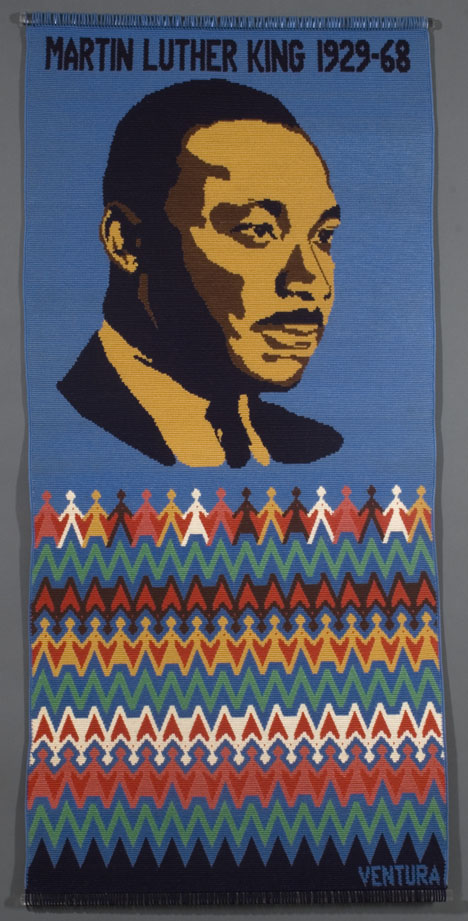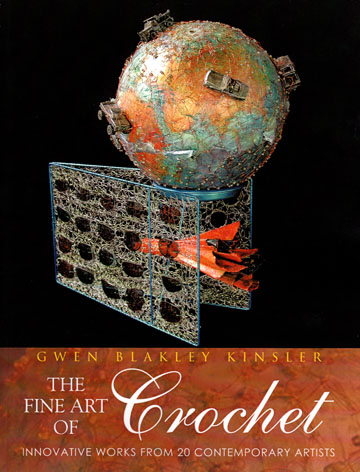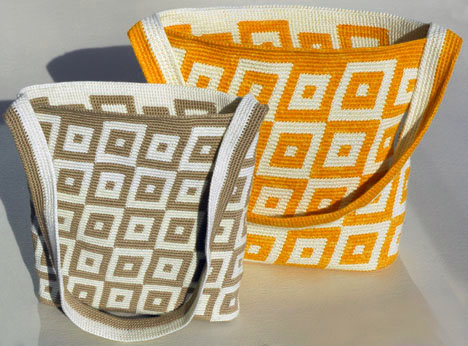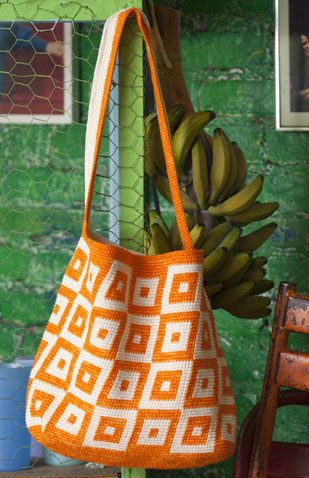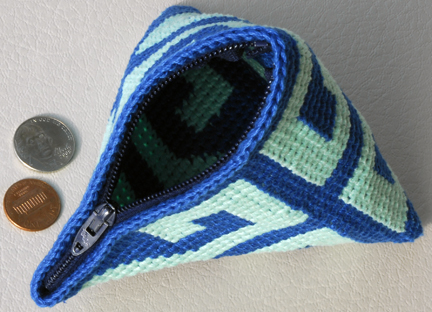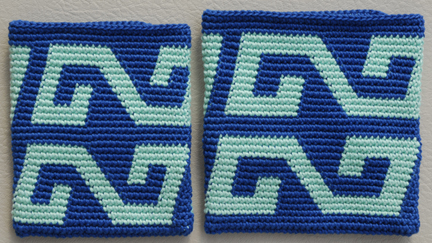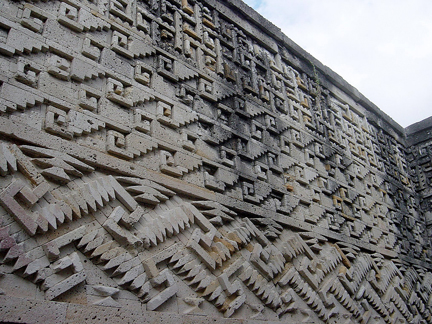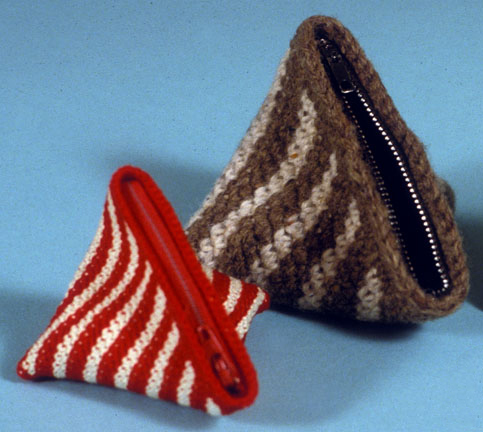If you haven’t seen Marina Gavrilov’s striking tapestry crochet, then you’re in for a treat! I first noticed her wonderful bags on the “
recently shared projects” window of the
Ravelry Tapestry Crochet group. Lots of great items pop up there, but almost every time I linked to something that caught my attention, it was by
RuskaM (her Ravelry name).
Marina describes herself as “. . . a mathematician by education but I am also a great lover of fine arts and crafts. One of my true pleasures is making tapestry crochet bags. I love their woven-like texture but I love “weaving” a story into a pattern most. Like a story, you don’t know how it’s going to turn out in the end, how the colours will compliment each other to make a stunning result.”
When I asked Marina how she discovered it – she explained, “I learned tapestry crochet when I was about 12 years old from my grandmother who was a great crafter. I have to add that I came from a culture (Russia) with a strong tradition in handcrafts. Tapestry crochet is called jacquard in Eastern Europe. I didn’t realize at the time the full potential of this technique. It took me half a lifetime and crossing the ocean to come to my lighting moment. A few years ago I came across your blog that changed my life. The tapestry crochet world was suddenly filled with so much colour and happiness! I could spend hours just browsing wonderful works by other artists. A few years ago my hubby bought me two of your books for my birthday. I was the happiest women on earth! I knew the technique but the book opened up my mind and unleashed my imagination. There are still several things I need to learn from your book, e.g. flat tapestry crochet and crochet with beads.”
How does she find the time to crochet? She responded, “I have so little time between my day job as an IT manager, my family, and my community work that I try to spend every free minute doing what I love most – designing charted patterns and crocheting.”
“I love to crochet bags. Since tapestry crochet is my favourite technique making bags is the most natural choice. Besides I like making something very functional and not too bulky. I am a small accessories girl, afghans and coats are not my forté. Although I admire people having so much patience and diligence!”
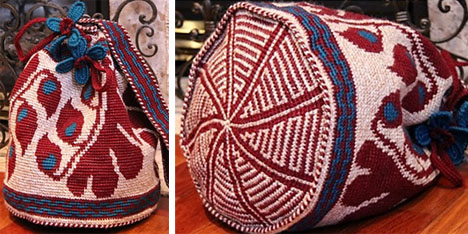
Marina, Harmony Drawstring Bag, 3.00 mm hook, Patons Shetland Ragg K.W., acrylic, and Red Heart Super Soft yarn, February 2012.
She shared her love for the craft by saying that the colors and textures attracted her. “I always loved woven-like fabric and traditional folk art and crafts. They are so rich in vibrant colours and carry timeless stories of generations and civilizations that have past! I am inspired by traditional South American indigenous tribal (mochila) bags. In my art I try to bring together traditional and modern western art. So I take the shape and design of mochila bags and put, for example, art nouveau or art deco designs on them. In my view tapestry crochet opens up a lot of opportunities for new ideas and creativity. It allows you to self-express, weave your own story, to be unique and yet continue the traditional line of this craft.”
Describing the below bag, Marina explained that the “Red drops were worked using the intarsia method. One of my personal favourite bags!”
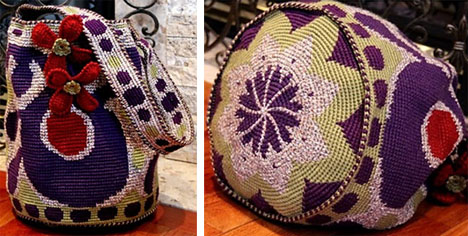
Marina, Purple Cats Eye Lucky Charm Drawstring Bag, 3.00 mm hook, variegated gold metallic, Red Heart Super Saver and Bernat Softee Baby yarn, May 2012.
Where does she get her yarn? She replied, “I mostly use yarn I found in thrift stores. If a design calls for a specific colour I buy it at a local yarn store. I prefer a more rustic feel to yarn and often use twine or thin rope. However, most of the time I just do with what I have – be it wool, acrylic, nylon thread, cotton or any combination of those.”
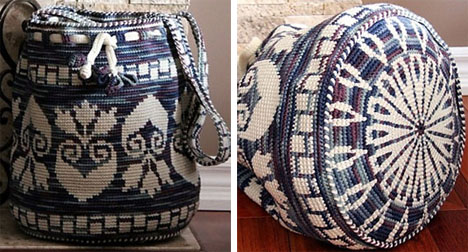
Marina, Blossom Drawstring Bag, 3.00 mm hook, Patons North America Decor yarn, November 2012.
Describing the below bag, Marina said, “The pattern turned out better than expected! I had to adjust the chart for slanted stitches (the chart has been updated!). The chart was very easy to use and to memorize. Lots of fun!”
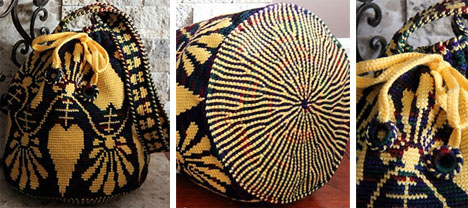
Marina, Floral Garland Drawstring Bag, 2.75 mm (C) hook, Yarns Brunswick KW Jewel Tones yarn, January 2013.
What hook sizes does Marina like to use? She says, “I crochet pretty tight with sizes 2.75 mm or 3 mm most of the time.”
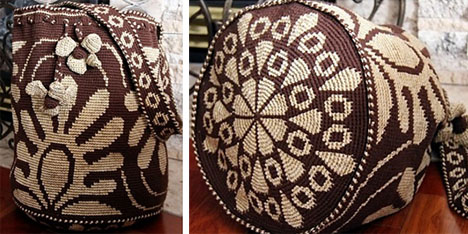
Marina, Green Plumage Bag, Red Heart Comfort Sport yarn and gold metallic yarn, 2.75 mm (C) hook, February 2013.
How big are Marina’s projects? She says, “My bags usually measure 31 cm (12.5″) in diameter and 34 cm (14″) high. I try to design my charts in sizes that fit within 65-75 rows (optimal height of a bag). No need to re-calculate and re-design!”
About the bag below, Marina said, “This bag was quite challenging to make. However, it was definitely worth the effort!”
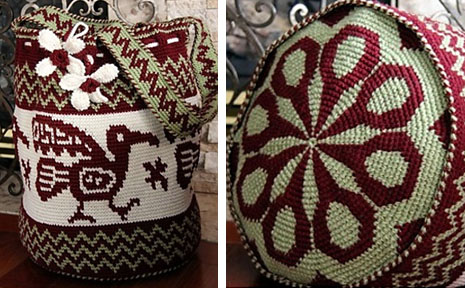
Marina, Dancing Raven Drawstring Bag, Red Heart Super Saver and Eaton’s Fisherman Knit Aran and acrylic yarn, 3.00 mm hook, March 2013.
I love that the bottoms of Marina’s drawstring bags are just as interesting as the sides!
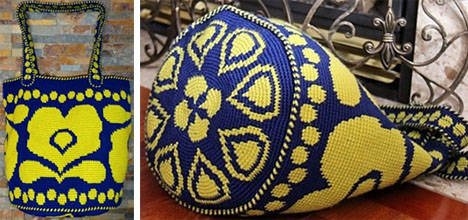
Marina, Cats Eye Flower Lucky Charm Drawstring Bag, Bernat Softee Solid Chunky yarn, 3.25 mm (D) hook, April 2013.
Marina finds inspiration everywhere. She explains, “I listen to the voice of my soul and allow my heart to lead me on my next design adventure. All of my designs are adjusted to create tapestry crochet projects although they can be used for any counted craft: cross stitch, filet crochet, knitting, mosaic, beading, etc.”
“I’ve been making crafts my whole life. From knitting, crocheting, embroidery, macrame to mosaic and stained glass, – I’ve done it all! Lately I’ve been designing my own patterns that I hope you will find inspirational for your own projects!”
Marina’s graphs can be adapted for a variety of media. She explained that, “The graph (below) was designed in memory of my mother-in-law who lost the battle against breast cancer and to support those men and women who are still fighting the battle. It is a free download on Ravelry.”
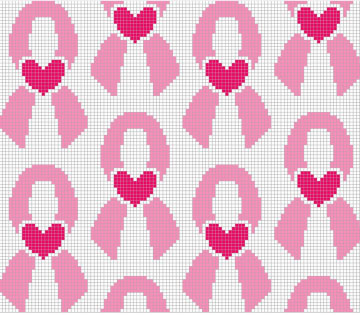
Marina, Heart Ribbon Graph
Does she sell her bags? Not yet – she explained that, “I have been giving away my bags and other items to my friends and family. I also have lots of completed items piled up at home. I will probably try to sell some of them but have to think how to organize this whole business. I am more into designing and making than selling.”
Marina sells her graphs and tapestry crochet bag patterns on both Ravelry and Etsy (and her bags here, too). She describes the below bag as “A fashionable fun and trendy accessory or a truly unique gift! This pattern is easy to customize to fit any tablet or a lap-top. The final size is 9.5” x 11.5”. The strap’s length is 34”. Please keep in mind that yarn selection and hook size may alter the finished dimensions.”
“Personally, tapestry crochet helped me in the most difficult time of my life. It re-balanced my world-view and helped me prioritise my values. I now see the world in bright colours. It re-sparked my interest in local cultures and people. I would love to connect with other tapestry crochet enthusiasts in a physical world. I am open to communication (at ruskamg@gmail.com) and cooperation. I am also interested in cultural tours to explore this wonderful craft around the world!”
That sound great to me! I hope we cross paths someday soon.
